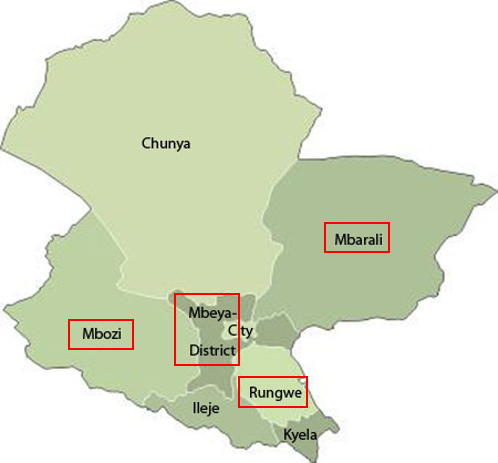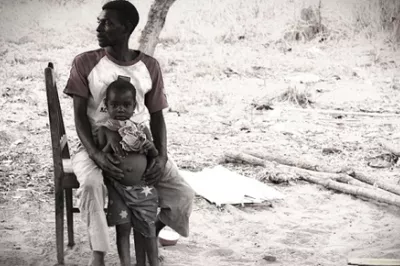Preparing to Spend a Year with Smallholder Farmers in Tanzania
The preparations for the smallholder farmer household financial diaries continue in Tanzania, Pakistan and Mozambique. Here we discuss the site selection process in Tanzania, which we completed in advance of the sampling and recruiting of households.
To sample and recruit households, we spoke to village leaders – those governing the villages as well as those recognized as community leaders – to understand the village dynamics and the characteristics of different households. Part of this exercise was a discussion around what it means to be “well off” in the community. When we piloted this question in a village in Mbeya where the vast majority of community members are farmers, the village elder we met with immediately related the meaning of “well off” to how much land households cultivate, the volume of crops they are able to produce and the level of effort they put into farming and harvesting. “The land is where the wealth comes from,” he said.
Visiting regions
In early March we confirmed the exact sites of our financial diaries work in Tanzania. We initially identified Morogoro and Mbeya as potential regions due to their crops, rain patterns, agricultural inputs and numbers of farming households. We went to Morogoro with expectations of visiting two areas, both with planting seasons during the short and long rainy seasons. However, when we arrived, we were surprised to learn that both areas now only have one planting season per year as the rain patterns have changed and the short rainy season has become too unpredictable. In contrast, we found that in Mbeya, even within a span of 50km, they have different harvest seasons, grow different crops and use a variety of inputs such as fertilizer and irrigation.
Visiting sites
As a region, Mbeya has one of the largest farming populations in Tanzania and a diversity of crops and harvest times and cycles throughout the six districts. To achieve a diversity of crops, harvest seasons and economic levels within Mbeya region, we visited four districts.
Districts of Mbeya visited
In Rungwe district to the south of Mbeya town, we were amazed by the wide variety of crops available year round. In fact, the farmers we spoke with said they were constantly harvesting a crop – whether cereals, fruits, tubers or otherwise – and they never went without food. Most farmers also grew tea for commercial purposes and the supply chain was so developed that a truck would drive around, collecting tea leaves from farmers at specified points around the district.

In Mbozi, west of Mbeya town, we traveled deep into the area to speak with farmers. Though remote and seemingly quite poor based on the area and housing, all farmers focused on growing coffee in addition to food and other cash crops, since it is a potentially lucrative income source. However, even though farmers may produce multiple sacks of coffee beans, only a portion of them may be of good enough quality to sell to the local buyers.
In Mbeya Rural district close to Mbeya town we were interested to learn that although the area along the main road boasted pyrethrum, sunflowers and other crops, the farmers from the interior communities we visited rely on growing maize to eat and potatoes to sell. We visited with one potato seller as she sat on the side of a secondary dirt road at 6:00 p.m., waiting for a truck or other public transport to pass and take her to town. She had been traveling all day to get to a main junction near Mbeya where she is able to find potato buyers, with no certain place to stay once she arrived.
Contrast that to another part of the district where we found villages along the main paved road which are “susceptible” to too much attention. We saw many outside investors, coming from the cities to lease conveniently located land with available irrigation. To avoid outsiders taking over all the land the government supported the village several years ago in dividing up the land around the village to guarantee that each local farming household had a plot for its home, its livestock and its fields.
In Mbarali district east of Mbeya town local farmers told us the soil is rich, though the climate seemed drier than other areas visited. Here the government had built an irrigation system to allow for farmers to have two seasons per year to grow maize – one season relying on the rains and one season relying on the irrigation. In addition to maize, farmers grow tomatoes, onions, sweet potatoes, cassava, and, as the main cash crop, rice.
Selecting sites
After visiting many sites located on tertiary dirt roads and main paved roads, in areas with varying amounts of rainfall and a variety of commercial and non-commercial crops produced with and without fertilizer, we elected to concentrate our research on the Mbeya Rural and Mbarali districts. After choosing the sites, we sampled and selected the households, which was done by mapping the villages, gathering information about household characteristics with a particular view of how different households are benefitting from the “wealth of land.” We are looking forward to gaining a deeper understanding of how the households that are primarily dependent on annual or semi-annual harvests are managing their cash flows, which will in turn allow us to make more effective recommendations that will ultimately help us achieve full financial inclusion for smallholder farmers in Tanzania and beyond.




Add new comment